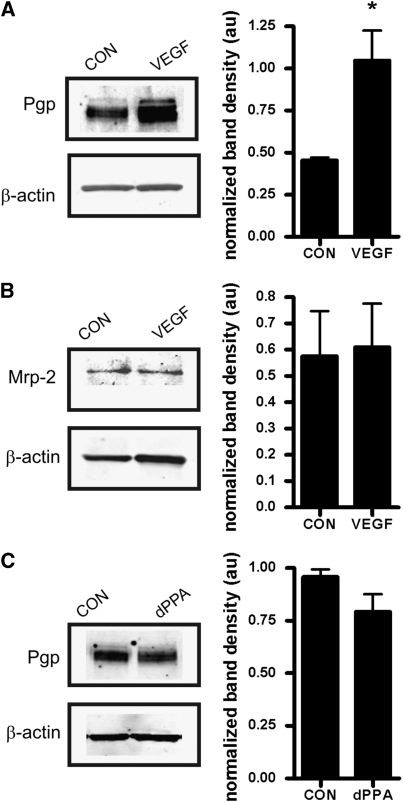Figure 2.
Intracerebroventricular injection of vascular endothelial growth factor (VEGF) internalizes P-glycoprotein at the blood–brain barrier (BBB). (A) Animals were given an ICV injection of either VEGF or artificial cerebrospinal fluid (CON) before undergoing perfusion with proteinase K (PK). Capillaries were isolated from the hemispheres ipsilateral to the injection site. The VEGF treatment was associated with a significant (P<0.05) increase in immunoreactivity for P-glycoprotein after PK perfusion, indicating that P-glycoprotein was less available for cleavage by PK and implying that P-glycoprotein is internalized in response to VEGF. (B) The VEGF does not induce protection of multidrug resistance-related protein 2 (Mrp2) from proteolysis by PK. (C) Infusion of the protein kinase C (PKC)βI activating phorbol ester 12-deoxyphorbol-13-phenylacetate-20-acetate (dPPA) to the cerebral microvasculature before PK infusion has no effect on P-glycoprotein immunoreactivity. Representative blots are shown, each histogram shows mean normalized band densities±s.e.m. from three separate experiments. Significance is determined by Student's t-test; *P<0.05.

